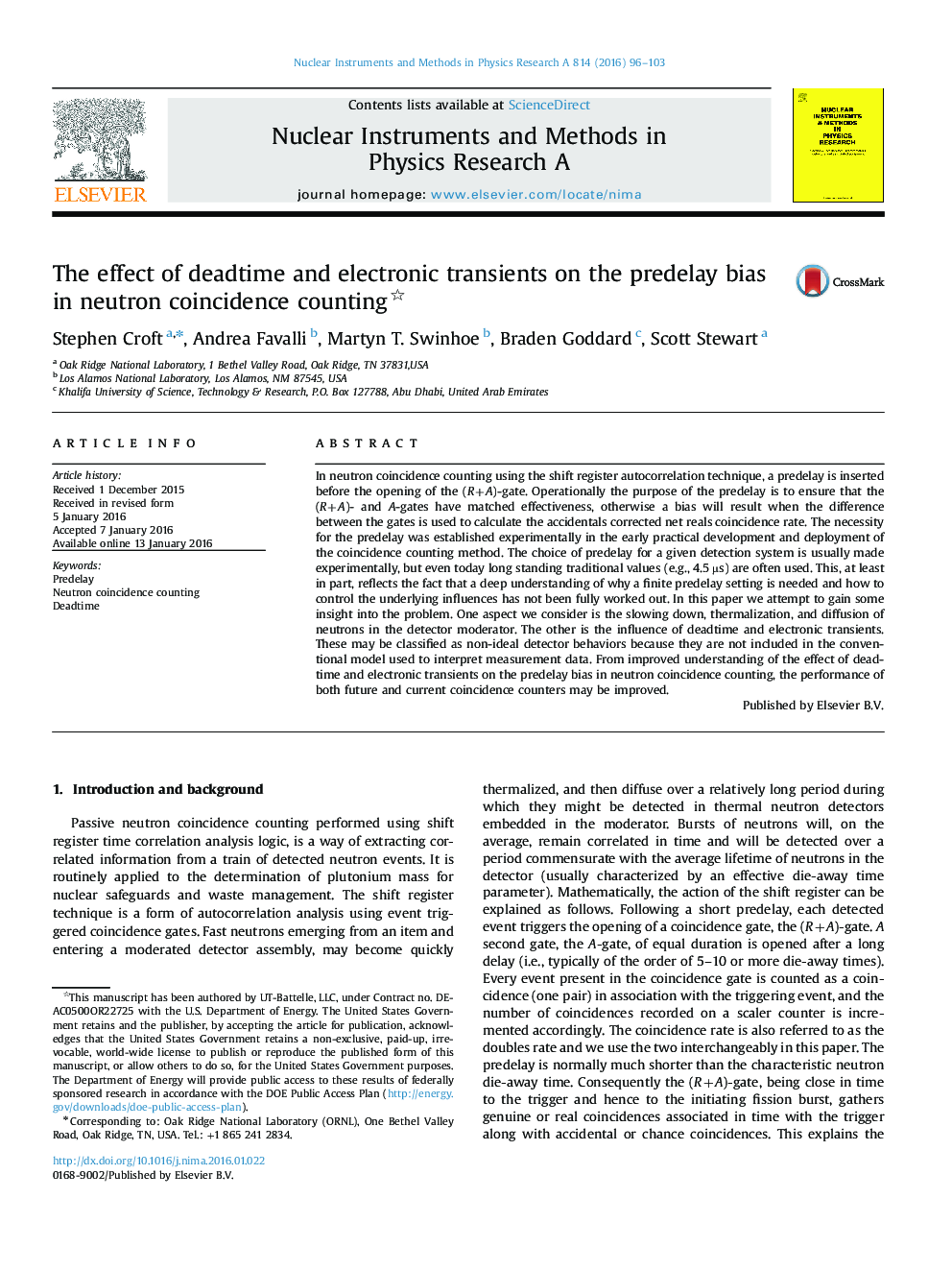| Article ID | Journal | Published Year | Pages | File Type |
|---|---|---|---|---|
| 8171019 | Nuclear Instruments and Methods in Physics Research Section A: Accelerators, Spectrometers, Detectors and Associated Equipment | 2016 | 8 Pages |
Abstract
In neutron coincidence counting using the shift register autocorrelation technique, a predelay is inserted before the opening of the (R+A)-gate. Operationally the purpose of the predelay is to ensure that the (R+A)- and A-gates have matched effectiveness, otherwise a bias will result when the difference between the gates is used to calculate the accidentals corrected net reals coincidence rate. The necessity for the predelay was established experimentally in the early practical development and deployment of the coincidence counting method. The choice of predelay for a given detection system is usually made experimentally, but even today long standing traditional values (e.g., 4.5 µs) are often used. This, at least in part, reflects the fact that a deep understanding of why a finite predelay setting is needed and how to control the underlying influences has not been fully worked out. In this paper we attempt to gain some insight into the problem. One aspect we consider is the slowing down, thermalization, and diffusion of neutrons in the detector moderator. The other is the influence of deadtime and electronic transients. These may be classified as non-ideal detector behaviors because they are not included in the conventional model used to interpret measurement data. From improved understanding of the effect of deadtime and electronic transients on the predelay bias in neutron coincidence counting, the performance of both future and current coincidence counters may be improved.
Keywords
Related Topics
Physical Sciences and Engineering
Physics and Astronomy
Instrumentation
Authors
Stephen Croft, Andrea Favalli, Martyn T. Swinhoe, Braden Goddard, Scott Stewart,
